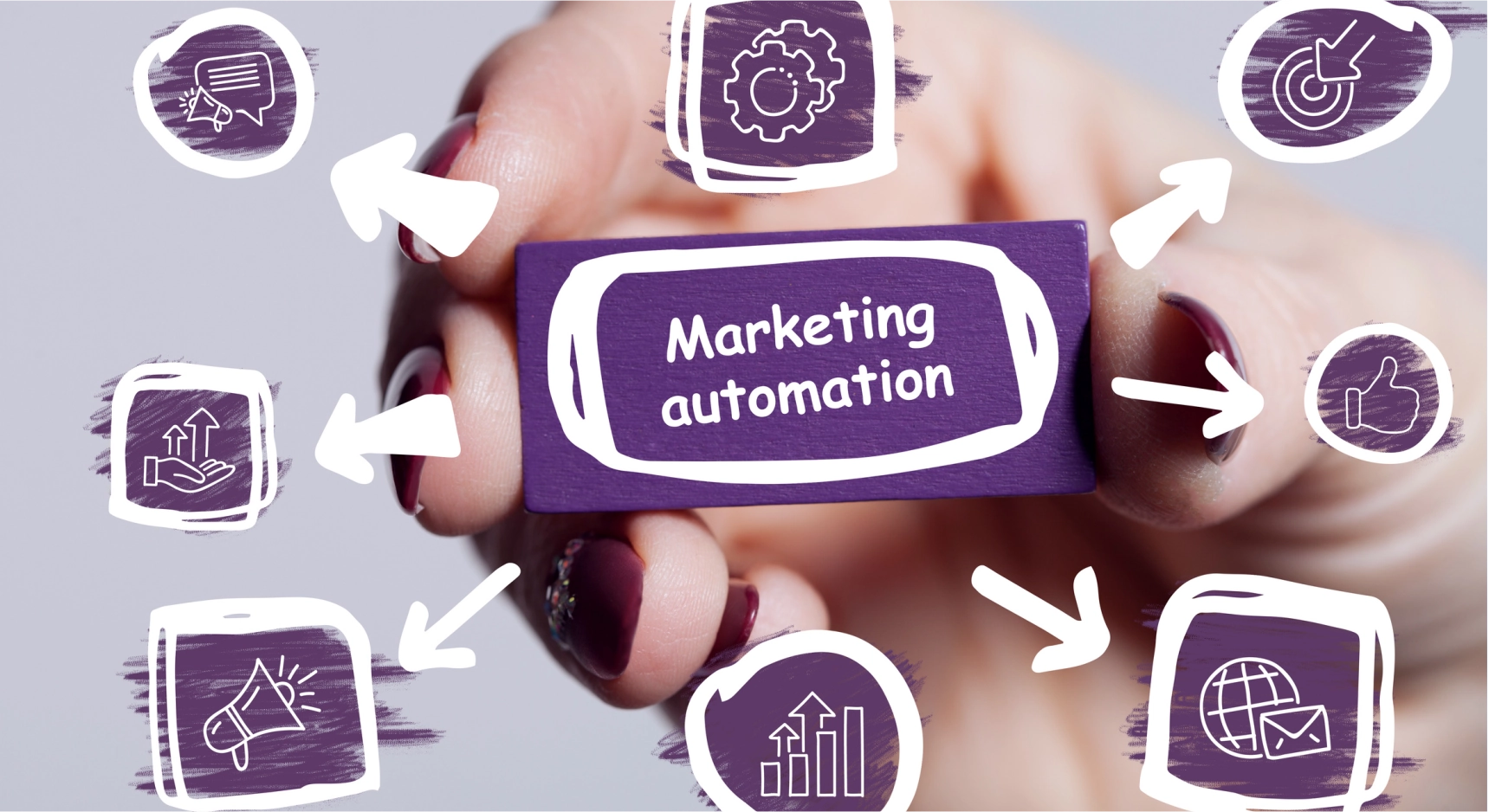


What Is Marketing Automation?

Marketing automation is the process of automating certain
marketing workflows, allowing adaptive software to strategically
use customer data to reach out to new and existing customers.
Corporate marketing teams use marketing automation tools for
many tasks. These include:
1. Email marketing campaigns: Marketing automation software can
generate certain email campaigns as part of an outbound
marketing strategy.
2. Lead nurturing: Marketing software can execute strategies
like lead scoring, segmentation, and drip marketing campaigns
where users receive steady outreach through marketing channels
to build up trust and familiarity with the company. This can
turn qualified leads into paying customers.
3. Lead management: A common marketing automation workflow
involves tracking potential customers who leave items in their
shopping carts. Through email marketing automation, these likely
customers receive gentle notifications about their shopping
carts and a suggestion that they complete the purchase.
4. Search engine optimization: SEO contributes heavily to
inbound marketing and lead generation in today’s digital
economy. All companies, but small businesses in particular, need
website landing pages that show up in search engine results.
Automated marketing tools can help adjust landing page content
by studying real-time search engine metrics.
5. Social media management: Marketing automation software can
handle some of the more tedious marketing tasks associated with
social media campaigns. These marketing tools can automatically
schedule social media posts, streamline social media messaging,
and conduct “social listening” campaigns to see who’s talking
about your brand on social media.
6. Analytics: Last but not least, marketing automation platforms
provide real-time data about your marketing campaigns and
customer interactions. They help with attribution (tracing a
customer journey back to a referring website), dynamic pricing,
A/B testing of particular ads, and sales data.
How Does Marketing Automation Work?
In most cases, marketing automation software works in tandem
with customer relationship management software, commonly
abbreviated as CRM. All aspects of a customer lifecycle get
tracked within a CRM. This includes initial attribution, email
campaign outreach, sales cycles, customer support, and various
other touchpoints related to the customer experience.
CRM integration enhances the functionality of marketing
automation software. The CRM software contains past
transactional data and possible notes about a customer added by
sales team members. By sharing this data with marketing
automation software, you can generate customized campaigns that
target a customer’s core interests and increase the likelihood
of a sale.
4 Benefits of Marketing Automation
Marketing automation software provides many benefits to users,
including:
1. Time-saving automation features: Marketing automation
software spares marketing teams the drudgery of sending emails,
scheduling social media posts, and other tedious marketing
tasks.
2. Generation of relevant content: By leveraging customer data
from your CRM software, a marketing automation platform can send
individual customers their own custom-tailored messages. This
might mean follow-up messages about an abandoned eCommerce
shopping cart, or it might mean providing useful information to
email list subscribers.
3. An abundance of data and analytics: Automated marketing
platforms provide their clients with an abundance of data about
customer behavior, spanning from email open rates to ad clicks
to time spent on a website to sales history. If you need data on
your customers, marketing automation software is a great way to
glean it.
4. Comparatively affordable when contrasted with a team of human
marketers: Marketing automation software can come with high
upfront costs, particularly for business-to-business companies
(B2B companies) that need B2B marketing automation. Yet over the
long run, companies can save a lot of money by turning certain
marketing processes over to computer software and strategically
hiring human marketers for higher-order tasks.
3 Tips for Creating a Marketing Automation Strategy
As you embark on a marketing automation strategy for your own
business, keep the following tips in mind.
1. Shop around for software. The digital market currently brims
with marketing automation software. Depending upon your needs,
you might want software with application programming interface
(API) capability. Or you might choose a vendor that offers many
advertising and email templates to help you quickly set up a
campaign. Compare offerings and don’t waste money on features
you won’t use.
2. Embrace dynamic content. Many marketing automation systems
can adjust advertising content and landing page content to align
with real-time web activity. Oftentimes, dynamic content systems
show entirely different material to people in different
demographics. This dynamic approach can help marketing
departments win quality leads by showing customers the right
content at the right time. It may cost a bit more to acquire
automated marketing software that provides dynamic content. But
over time, this extra expense could increase your marketing ROI
(return on investment).
3. Try drip campaigns. A drip campaign is one in which a company
steadily sends a potential customer automated emails that
highlight product offerings or perhaps just provide useful
content. The goal of such marketing activities is to build a
trusting relationship with the customer. As they become more
familiar with the brand and learn more about service and product
offerings, they may be more likely to follow through on a
purchase.
Marketing Automation vs. Sales Automation: What’s the Difference?
The difference between marketing automation and sales automation
aligns with the overall difference between marketing and
sales.
Marketing involves building brand awareness. Through outbound
marketing (like ads and email campaigns) and inbound marketing
(like SEO and content creation), marketing teams educate
potential customers about a brand and its offerings. Marketing
automation runs through marketing automation software. Sales
involves actual purchases. In a sales relationship, a business
asks a customer to engage in a financial transaction to purchase
goods or services. In most customer journeys, a sale comes after
a marketing campaign; people do not make purchases until they
become generally acquainted with the vendor. Sales automation
runs through customer relationship management (CRM) software.
Agile marketing teams play out multiple iterations of marketing
campaigns to constantly analyze metrics and make continuous
improvements that satisfy customer needs.






